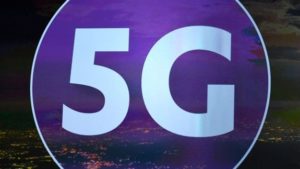
Get ready to hear a lot more about 5G.
Slowly but surely, we’re moving closer and closer to the super-connected, ultra-fast, 5G world tech companies have been promising us for years.
Here’s what you need to know about the state of 5G right now.
1. It’s really, really fast
Okay, it sounds obvious, but it’s important to understand just how much faster 5G is compared to current 4G LTE speeds. 5G will not only be many, many times faster than your existing LTE connection, it will be significantly faster than the broadband connection you have at home.
To put that in perspective, the fastest 4G download speeds in the U.S. top out at an average of 19.42 Mbps, according to OpenSignal. 5G, by comparison, promises gigabit speeds.
Qualcomm’s first 5G modem, the Snapdragon X50, supports speeds up to 5 gigabits per second. That’s more than 257 times faster than the average speed of the fastest LTE network in the United States.
Most of us have never experienced anything close to speeds that fast—even Google Fiber tops out at 1 Gbps. And we’re only talking about the first generation of 5G modems. Future chips will likely be even faster.
2. But … it’s not just about speed
It’s not all about speed though. Yes, 5G networks will bring blazing fast data connections, but they also enable much more than that.
Part of the appeal of 5G is that it also brings much higher capacity to mobile networks, meaning that networks will be able to support many more data connections than what was previously possible. Have you ever been to a large event where your data connection slowed down or stopped working? That’s because 4G networks can only support so many devices before being overloaded.
But 5G networks have a much higher capacity. They’re required to be able to support up to a million devices per square kilometer, according to the International Telecommunications Union’s standards.
In addition, 5G is a huge upgrade over 4G when it comes to latency, or the amount of time it takes for data to be transmitted. Because 5G networks support extremely low-latency connections, devices will be able to communicate much faster than previously possible.
Which brings us to…
3. 5G isn’t just for phones
Put all this together and you begin to understand why 5G is such a big deal — and not just for the smartphone industry. It has huge implications for just about every connected device.
The technology will be essential for self-driving cars, which will need to be able to communicate with the world around them as quickly as possible. Lower latency and higher capacity means that cars will actually be able to communicate with their surrounding environment fast enough to enable them to actually be fully autonomous.
Consumer tech like wearables, virtual reality headsets, PCs, and smart home devices will all dramatically improve as well, thanks to 5G. Even day-to-day tasks like checking social media or initiating a video call could drastically change.
4. It won’t be cheap
The downside of all this, at least initially, will be all that extra speed is likely to come at a higher cost. Sprint’s CEO said just last week he expects to jack up the price of unlimited data plans by as much as $20 to $30 for 5G.
Other carriers haven’t commented on specific pricing yet, but, as others have pointed out, data costs have historically climbed as network speeds increase and there’s little reason to think that trend won’t continue for the foreseeable future.
It’s not all bad news, though. Companies like Qualcomm say they’re optimistic data prices will come down in the long run due to the sheer number of new devices that will be coming online once 5G starts to roll out. But it’s impossible to say how long that transition could take
5. We’re not quite there yet
Though we’ve seen a lot of positive progress just in the last year, we still have a long way to go before 5G is anywhere near as pervasive as 4G is right now. Carriers and hardware companies are only just beginning to make commitments for 2019.
But most in the industry agree that 2020 is the earliest 5G will even begin to touch most consumers. And even then, early 5G networks could come with their fair share of growing pains — like inconsistent coverage or negative effects on battery life.


